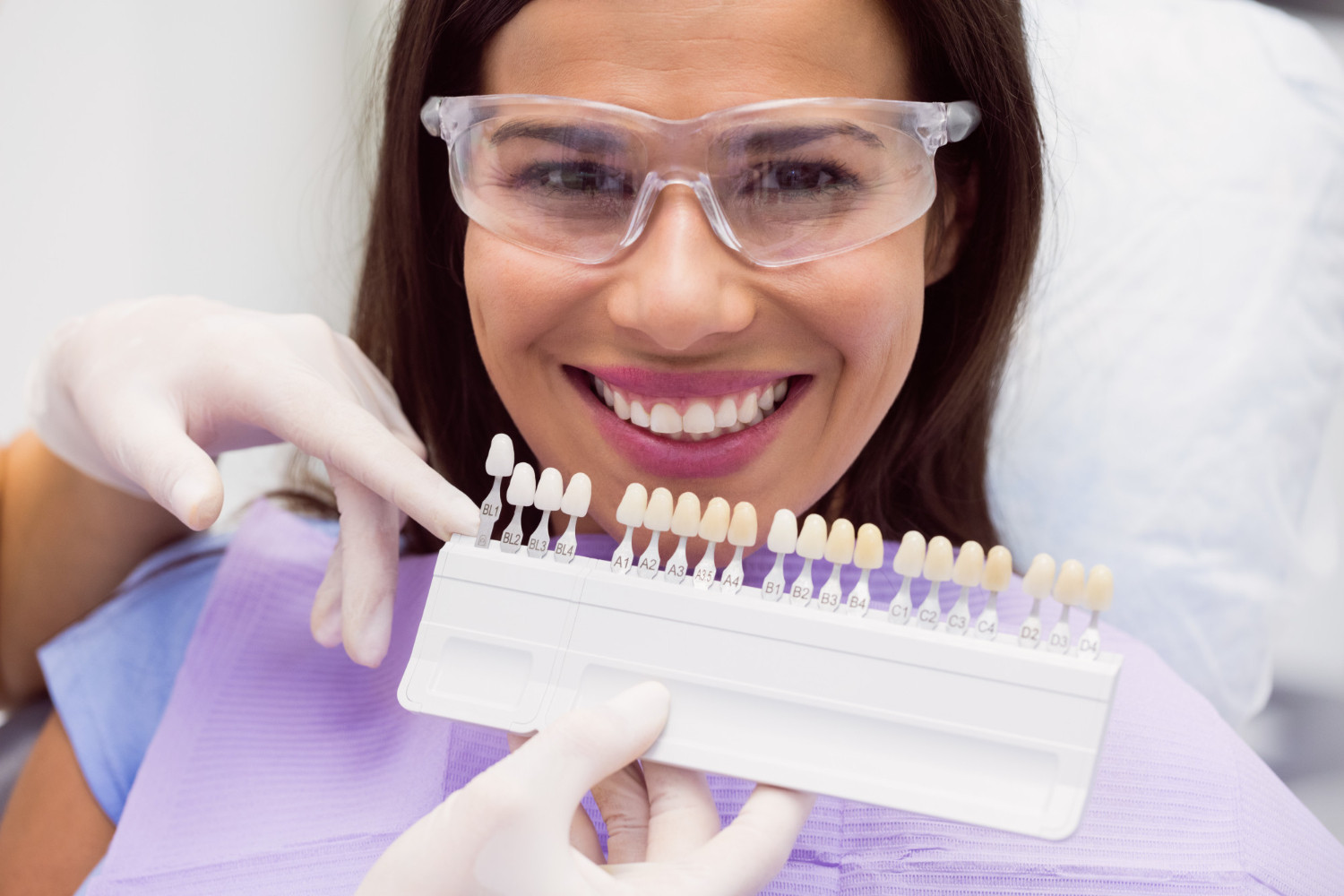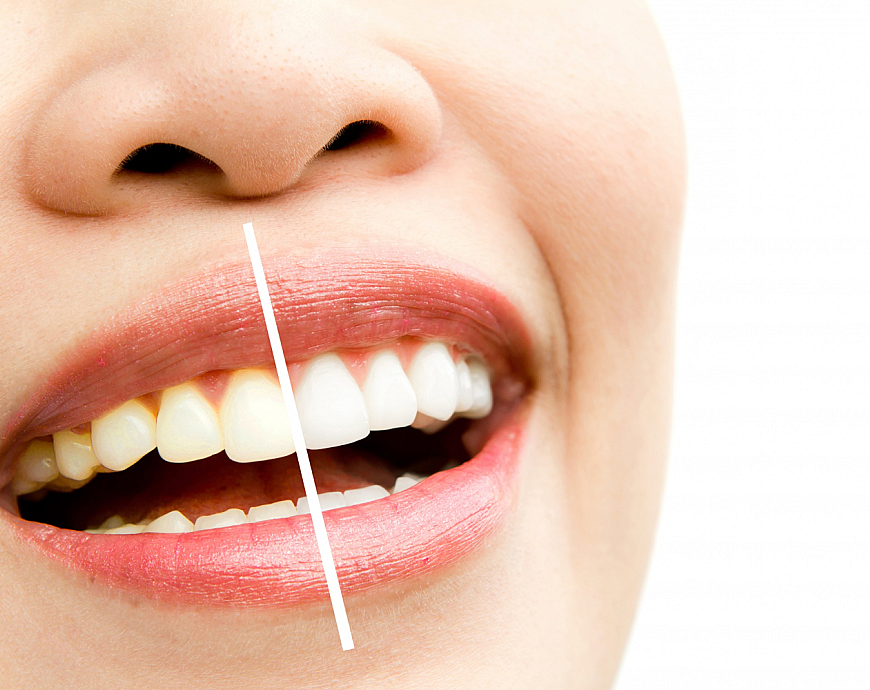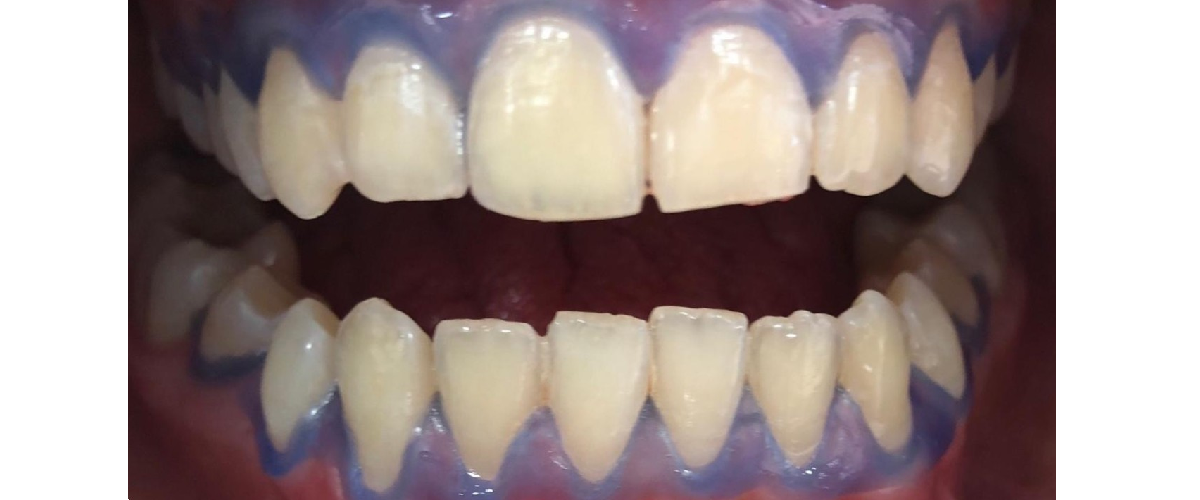Dental aesthetic procedures, a category that also includes tooth whitening, are increasingly requested in dental clinics, due to the major aesthetic benefits they bring. Designed to change the shade of the enamel, tooth whitening procedures are based on controlled chemical reactions, through the administration of oxidizing substances. The therapeutic protocol is personalized following a complete evaluation of the tooth structure, as well as the medical history, to ensure uniform results that comply with clinical standards. The success rate is measured according to the duration of preservation of the improved shade and the integrity of the enamel, according to objective performance indicators.
What is tooth whitening?
Tooth whitening is a set of dental techniques and procedures that aim to change the shade of the tooth surface, the objective being to obtain a lighter and more natural color of the teeth. Typically, a teeth whitening treatment involves oxidizing substances, such as hydrogen peroxide or carbamide peroxide, which penetrate the structure of the enamel and dentin and thus promote the removal of accumulated pigments. Modern practices allow both teeth whitening in the office, under the direct supervision of a dentist, and teeth whitening at home, through personalized solutions and trays.
When is tooth whitening necessary
Teeth whitening is recommended when the enamel shows unwanted color changes and when there are no other problems that require priority treatment. Common situations that lead to changes in the shade of the teeth include repeated consumption of colored foods and drinks, smoking, or even aging. Research indicates that tooth shade influences social perception and confidence in one's own image, so many individuals resort to professional tooth whitening to correct such chromatic variations and implicitly to improve their self-confidence.
Who needs teeth whitening
Anyone who notices unsightly changes in their teeth can benefit from a teeth whitening treatment. Whether it is light stains on the surface of the enamel or more extensive discoloration, existing solutions can adapt to most situations. Those who smoke, drink coffee, red wine or colored teas have a greater predisposition to yellowing and may require repeated teeth whitening treatment at reasonable intervals. On the other hand, there are also people who suffer from severe enamel erosion, and the dentist decides whether such treatment is suitable for them.
Causes of tooth yellowing
Color changes in the teeth are the result of the interaction of numerous factors. An important factor is nutrition, especially the consumption of coffee, black tea, chocolate or wine, products with pigments that adhere to the structure of the enamel. Smoking accelerates the yellowing process of teeth, nicotine and tar causing yellow or brown deposits. Aging brings about a thinning of the enamel and a gradual exposure of the dentin, which has a more yellowish tint.
Certain medications can also generate internal dental dyschromia, which will require professional whitening. In addition, poor dental hygiene allows the accumulation of bacterial plaque and tartar, which in turn favors the progressive yellowing of the teeth.
Teeth Whitening – Benefits
Modern procedures for whitening teeth offer obvious advantages, starting from improving physical appearance to increasing self-confidence. White teeth can facilitate social and professional relationships and can motivate the patient to maintain proper oral hygiene, through regular brushing and periodic check-ups.
Teeth Whitening - Before and After
The changes achieved by teeth whitening can best be assessed by directly comparing the appearance of the teeth before and after treatment. Visual documentation of the results allows the observation of the progress achieved and provides a faithful representation of the effects of the intervention on the color of the enamel. Attached below are some photos taken in the office, which highlight the uniformity of the result and the degree of lightening of the tooth shade following the professional teeth whitening treatment.
Teeth Whitening Methods
Therapeutic options for teeth whitening include procedures performed in the office, home treatments and solutions based on natural ingredients. Before any procedure, a complete dental consultation is recommended to determine the condition of the gums and the optimal treatment option.
Professional teeth whitening in the office
Treatment performed in the dental office offers a high level of safety and faster results for teeth whitening. The specialist doctor can decide the concentration of the whitening substance depending on the specific patient's preferences, so that discolorations are effectively corrected. The differences between professional whitening, performed in the dental office, and home whitening concern the degree of control of the procedure, the intensity of the oxidizing substance and the possibility of achieving the desired shade in a shorter or longer period of time.
When it comes to performing the procedure in offices, laser tooth whitening is often preferred by both doctors and patients. Laser tooth whitening is an advanced method, which involves activating the gel applied to the surface of the teeth with the help of a light beam, a process that leads to obtaining a lighter shade. The duration of a session can be shorter than with traditional methods, and some patients state that the sensations of sensitivity are significantly reduced. For appointments for laser whitening, you can consult the contact page.
DentArbre Dental Clinic uses a whitening gel from the Opalescence range, based on hydrogen peroxide, which ensures effective penetration of the dentin layer. The gel contains compounds that can help limit post-operative sensitivity and strengthen the enamel. The main advantage of the gels from the Opalescene range lies in the ability to reach a lighter shade within a reasonable range, with minimal discomfort for the patient.
Internal/devital tooth whitening
Internal tooth whitening, sometimes also called devital whitening, involves placing an oxidizing substance inside the pulp chamber, under a temporary filling. Internal tooth whitening is recommended for patients who have been left with discolorations following endodontic treatment, in those situations where external procedures do not achieve uniform tooth color.
The procedure requires proper isolation of the treated area to avoid the leakage of oxidizing materials into the oral cavity. In general, the treatment is carried out for a period of approximately 3-5 days, during which the patient has the whitening substance placed in the pulp chamber of the tooth. However, if the results are not as desired, and the doctor wants to intensify the whitening effect, the application of the gel can be repeated for a few more days. At the end of the treatment, the oxidizing material is completely removed, and the tooth is restored both functionally and aesthetically, by restoring its natural anatomy.
Home Teeth Whitening
Home teeth whitening involves the use of trays adapted to the dental impression, in which a lower concentration peroxide gel is applied. The dentist issues precise instructions regarding the duration of wearing the trays and the necessary breaks between applications, to limit tooth sensitivity. Studies indicate that home whitening leads to progressive results, which may be advantageous for those who prefer a slower whitening pace. Patients should avoid food pigments and brush after each meal, to support the process of lightening the shade.
Natural Teeth Whitening
Whether it is a desire to use non-aggressive solutions for the enamel and gum areas or because of budget, some patients are looking for natural teeth whitening methods, therefore without the need to consult a doctor. Although such options exist, they cannot produce a dramatic change in color in people with pronounced dyschromia. The effects vary depending on the tooth structure and the stage of staining.
Certain toothpastes specially designed for professional whitening may contain natural ingredients and can support a gradual process, without major risks of sensitization. In addition, some plant extracts, such as sage or turmeric, are known as agents with lightening potential, although scientific evidence confirms only moderate results. A teeth whitening device based on LED light, together with natural whitening gels, may represent an intermediate option.

How much does a teeth whitening procedure cost?
The price of teeth whitening is influenced by the number of sessions required, the concentration of the solutions and the procedure used (UV lamp, laser, individualized trays). Consequently, the assessment of how much teeth whitening costs involves a discussion with the dentist, who analyzes the extent of the discoloration and the type of technology chosen. For an estimate, you can consult the pricing section.
Teeth Whitening – Price
| Procedure | Cost (expressed in RON) |
| Laser teeth whitening | 1300 |
| Professional whitening In office | 900 |
| Professional home whitening kit | 400 |
| Devital whitening per tooth | 150 |
The prices displayed may change depending on the existence of promotions and the degree of dyschromia. For an accurate quote, the dentist will analyze the individual situation and propose a complex treatment plan.
Risks and contraindications for teeth whitening
Although teeth whitening treatment is safe when professional recommendations are followed, there are certain risks and contraindications. People with dentin hypersensitivity may experience increased discomfort during or after the whitening session, so in their case there may be contraindications. The health of the gums should be evaluated beforehand to avoid inflammation or lesions. Problems such as untreated cavities, tooth fractures, or old fillings that do not adapt properly can decrease the effectiveness of whitening substances.
Pregnant or breastfeeding women should seek medical advice before trying any procedure. There are also situations in which the enamel structure is thin, and the doctor may recommend alternatives to classic tooth whitening, to prevent compromising dental integrity. In addition, patients with allergies to the components of oxidizing gels must be carefully monitored. A common adverse effect is temporary sensitivity to cold and heat, but it usually disappears after a few days. In all cases, prior medical evaluation minimizes the risks and allows the choice of an appropriate method.
Tips for maintaining results after tooth whitening
Long-term maintenance of the tooth color obtained after tooth whitening requires compliance with general oral hygiene recommendations. First, daily oral hygiene becomes fundamental to protect the shade obtained through treatment. Second, it is necessary to avoid smoking and limit the consumption of coffee, black tea and red wine, to reduce contact with pigments that affect the color. A check-up every six months is also recommended, as it helps remove tartar deposits and allows for checking the integrity of dental work.

Teeth Whitening Myths
There are many misconceptions about teeth whitening, generally spread through online platforms. One example is the idea that using baking soda or lemon juice frequently is enough to get white teeth. In reality, excessive use of abrasive substances can damage the enamel and lead to sensitivity.
Also, some people believe that any toothpaste labeled as whitening will provide immediate results, but the effect of these formulas is limited and mainly addresses superficial stains. Another myth states that whitening destroys the enamel, but research shows that following the clinical protocol does not cause irreversible damage.
Professional teeth whitening VS home teeth whitening
Professional teeth whitening offers the advantage of rigorous control of the concentration of substances and exposure time. The doctor can identify areas that need additional attention and can use advanced technologies, including laser, for a uniform and fast result. On the other hand, at-home teeth whitening is preferred by those who want flexibility and lower costs, but results appear more slowly and require discipline to apply the gels regularly. Both approaches can be effective, with the caveat that results depend on the initial condition of the teeth and the patient's compliance with the instructions received.
Frequently asked questions about teeth whitening

Dr. Nicoleta Taran answers questions:
+40787877799 | +40762573398
contact@dentarbre.comȘoseaua Colentina, nr. 16, Bl. A1, Complex Rose Garden, Sector 2, Zona Obor - Colentina - Doamna Ghica


